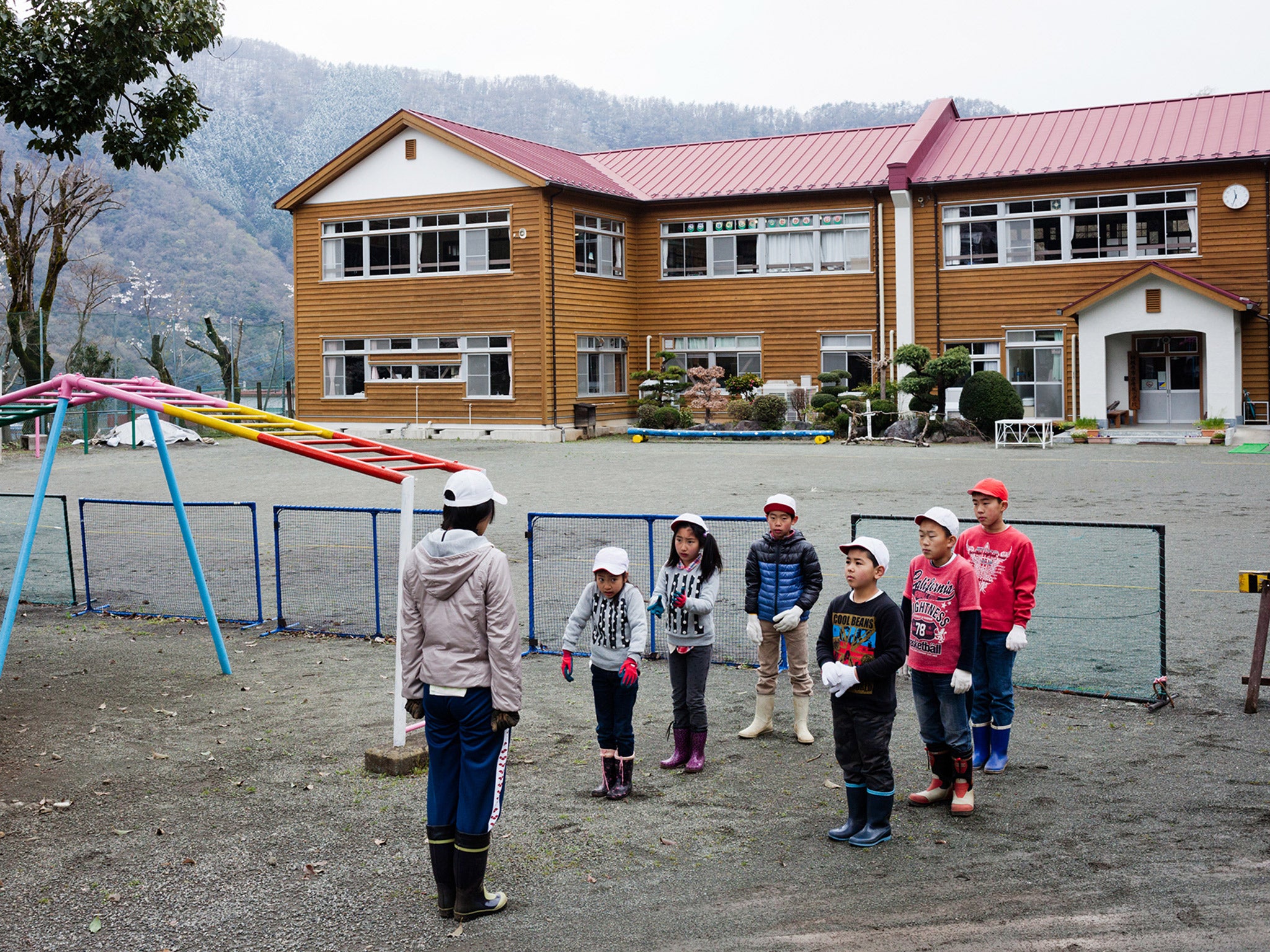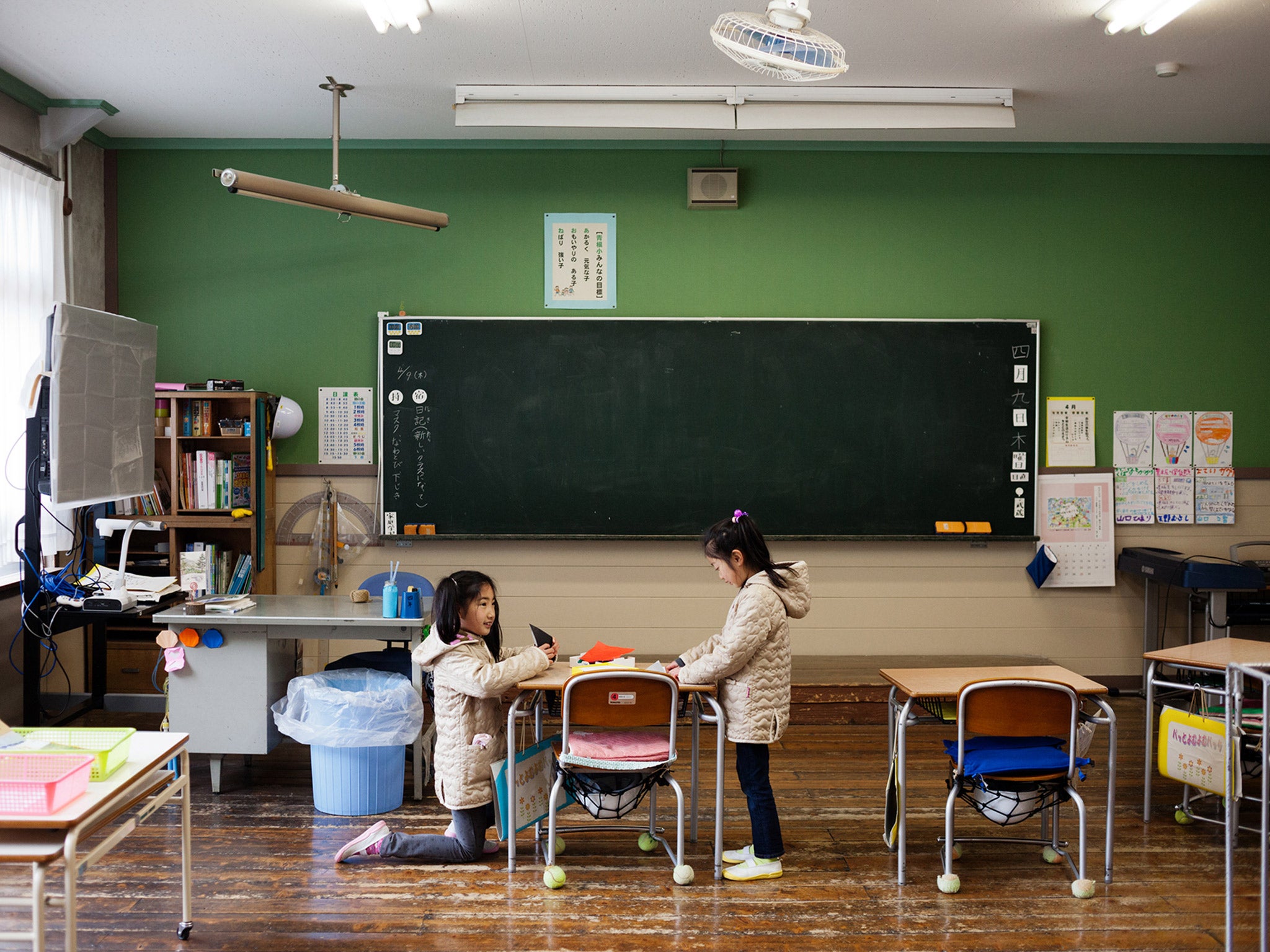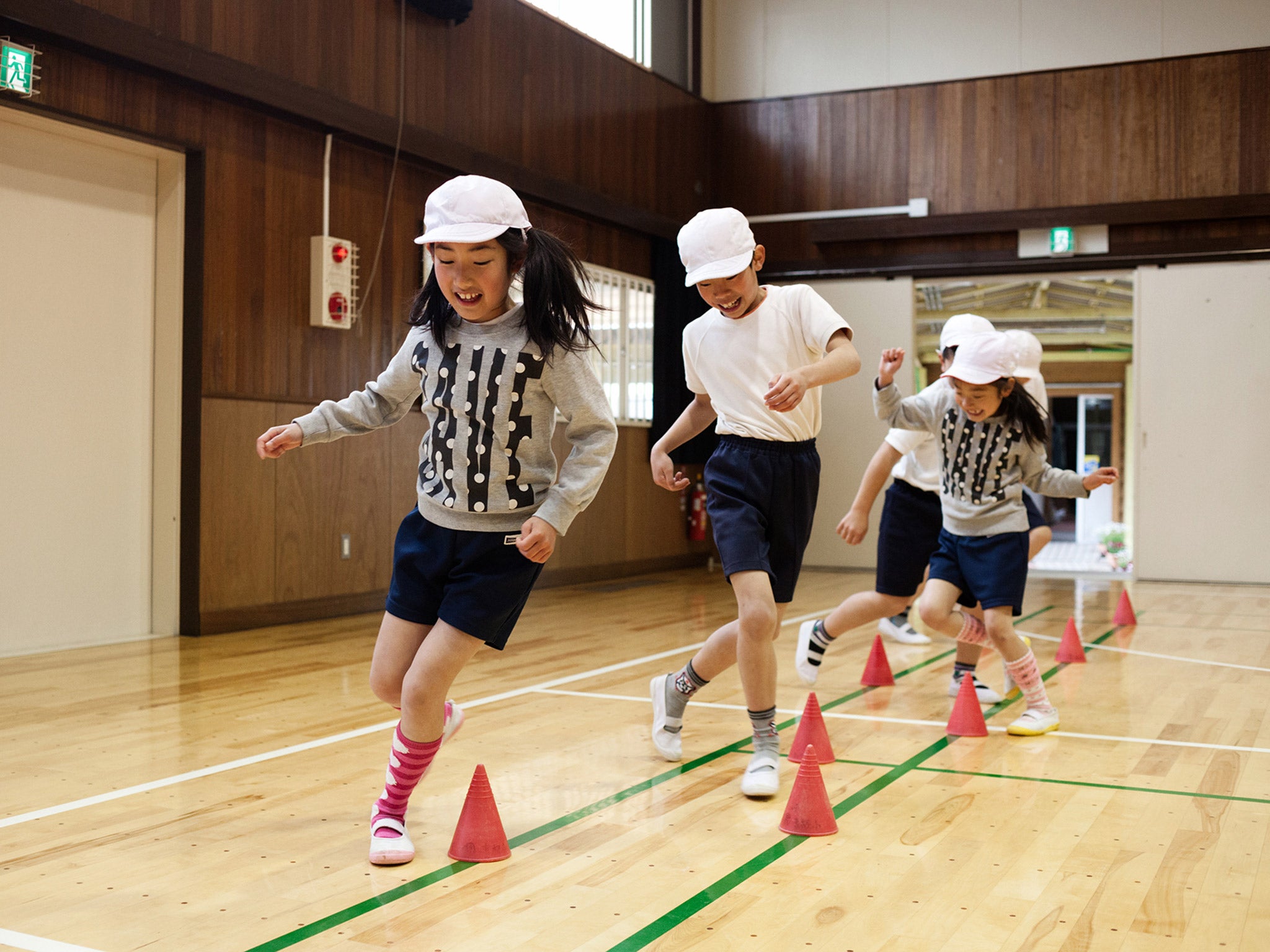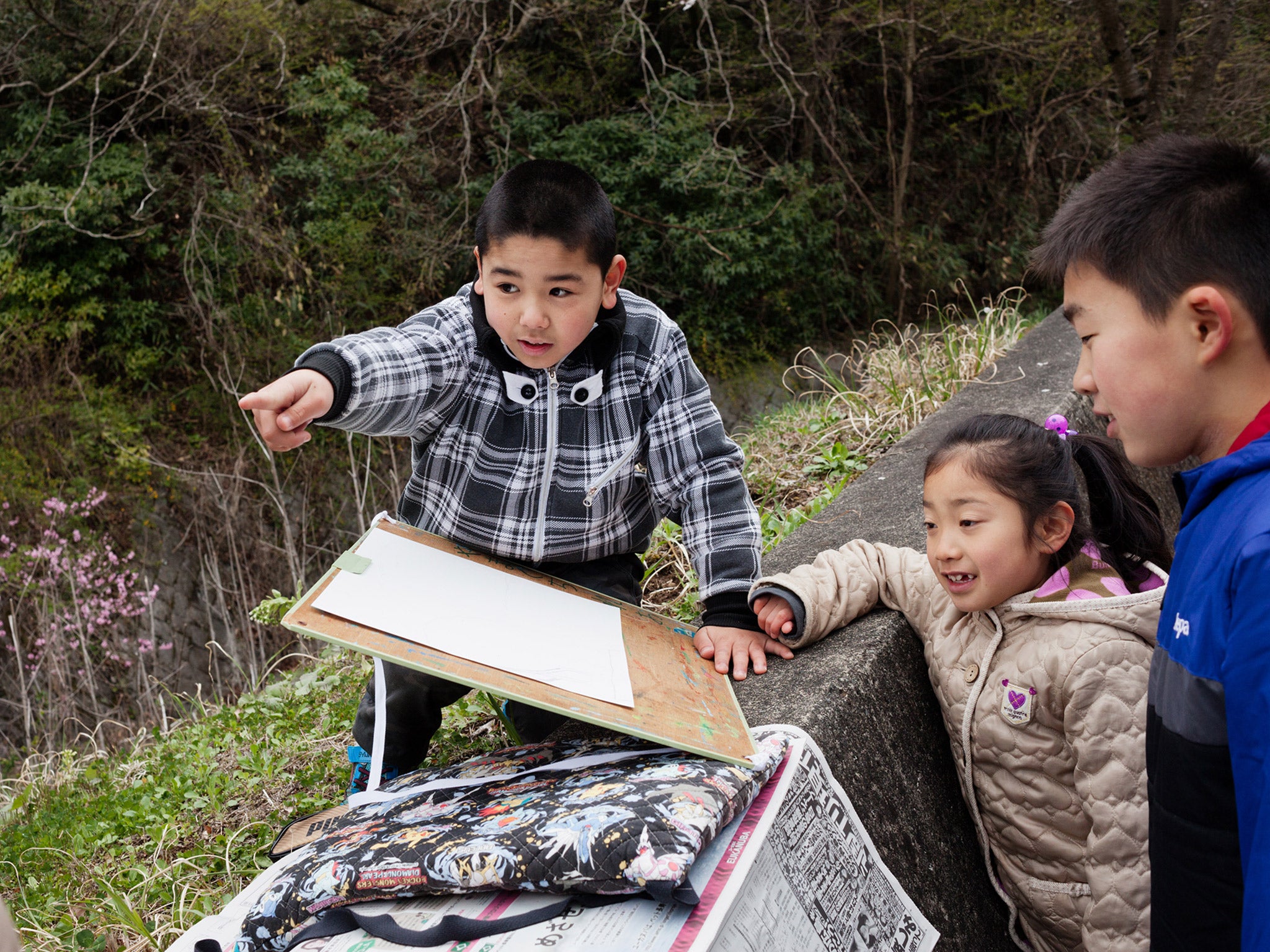Tiny schools in rural Japan with as few as six pupils resisting closure
The government in Tokyo wants to axe schools with fewer than five classes but is being thwarted by significant local resistance

Your support helps us to tell the story
From reproductive rights to climate change to Big Tech, The Independent is on the ground when the story is developing. Whether it's investigating the financials of Elon Musk's pro-Trump PAC or producing our latest documentary, 'The A Word', which shines a light on the American women fighting for reproductive rights, we know how important it is to parse out the facts from the messaging.
At such a critical moment in US history, we need reporters on the ground. Your donation allows us to keep sending journalists to speak to both sides of the story.
The Independent is trusted by Americans across the entire political spectrum. And unlike many other quality news outlets, we choose not to lock Americans out of our reporting and analysis with paywalls. We believe quality journalism should be available to everyone, paid for by those who can afford it.
Your support makes all the difference.In the historic wooden schoolhouse here, decked out in the kind of bright artwork done by kids the world over, there are two classrooms, each containing three desks that sit marooned in the middle of a space made for many more. At break time, a boy kicks a soccer ball around the yard by himself.
“It’s a little bit lonely,” said Taiki Kato, 11, who said he was looking forward to going to middle school next year. “It’s a bit bigger, and there might be kids from other elementary schools.”
The middle school has eight students. The elementary school, where Kato started sixth grade this month, has six. And two of them, the only girls, are from the same family.
That meant Yukari Sudo could easily master everyone’s names in her first week as principal of the elementary school in this small village, nestled in mountains 50 miles but a world away from the tightly packed metropolis of Tokyo.
“When I was greeting 900 kids in the morning, I could recognize them, but I might not be able to remember their name,” said Sudo, who recently moved to Aone after being vice principal at a much bigger school.
Learning the staff members’ names would take longer — after all, there were twice as many of them.
Aone, population 638, has two small general stores and a grimy restaurant that could make a claim for serving the worst food in Japan. The average age here is 62. One of the most common modes of transport is a walker with wheels that doubles as a shopping cart and mobile seat.
This scene is played out across Japan, from the sparsely populated island of Hokkaido in the north to the alps along the west coast to here, commuting distance from the capital.
For decades, Japanese people have been deserting these regions in droves, heading to the bright lights and job opportunities of Tokyo. Now, almost a third of Japan’s 127 million people live in the greater Tokyo area.

With a rapidly aging society and miserable birth rate, Japan hasn’t been able to replace the people leaving outlying towns and cities as quickly as they’ve departed. And the situation is only going to get worse. The number of children younger than 14 is expected to almost halve by 2050, according to government projections, as fewer people bear fewer children and the proportion of the population at childbearing age shrinks. (There are expected to be 5 million Japanese in their 90s by the middle of the century).
Like this one, nearly half the public elementary and junior high schools in Japan are smaller than the Education Ministry’s guidelines.
The government in Tokyo would like to close these small schools and fold them into others nearby.
“If a small school has less than five classes, it should seriously and aggressively consider integrating with another school with a sense of urgency,” said Hiroto Iwaoka, chief of compulsory education reform at the ministry.
This is not just about economics. It’s also driven by concern that kids at small schools don’t develop the social skills they’ll need in the wider world when they’re seeing the same handful of classmates every day, year in and year out.
In Hokkaido, some children are commuting 30 miles by bus every day because of school closures, while one tiny school in Nagano, in the alps, can’t close because the nearest alternative is a 90-minute drive away.
But the central government faces a significant level of local resistance, and although it holds almost all the purse strings, it must defer to district authorities. Kyoko Inoue, chief of educational affairs in Sagamihara, the municipality that incorporates Aone, says there’s no plan to close the elementary school here, even though there’s a much bigger school, with about 80 students, five miles away, albeit down a winding, narrow mountain road.
“A school often functions as a core of a community,” she said. “We want a school to be something a local community desires.”

Aone’s elementary school certainly has strong links to the community. It has been here for 142 years. At its peak, in 1945, 254 students sat in its classrooms. In the 1960s, it still had close to 200. Then a gradual but steady decline set in.
Even now, the whole building — with its music room, complete with a grand piano, its science room stocked with lab equipment and its well-appointed library — is operational, although the rooms are heated only when they are used.
For “integrated life studies” on a recent day, the six kids walked up the road to a field where they planted potato seeds to a soundtrack of bird songs, then traipsed back along a forest path.
Next they had lunch — grilled fish, rice, and soup with tofu, bamboo shoots and mountain asparagus — while classical music played in the background. Afterwards, the six of them collected shiitake mushrooms from the forest, then did an impressive array of stretching exercises in the frigid gym.
The school manages to have sports days, even though there aren’t enough players to form a whole soccer team and the teachers have to be careful not to put too many kids in the cheering squad at once or there will be no one to spur on.
There are educational constraints, too. Kotoe Arakawa, who teaches the younger class, has to teach a lesson to three kids of different ages within a 45-minute period.And she can’t exactly tell them to discuss a subject with their peers while she teaches a different grade level.
Sachiko Kaneko, who teaches the three sixth-graders, said she worries that her students are not exposed to a variety of ideas.
“When you have a bigger class, you can divide them into small groups and get them to come up with ideas, present them to the class,” Kaneko said. “But when they’re only one student in each grade, you can’t do that.”

Indeed, throughout the day, the students were barely unsupervised for a minute, a teacher correcting them while they were drawing cherry blossoms during art class and closely monitoring them as they spaced out their potato seeds.
“In a bigger school, children learn social skills and how to live in the real world,” Arakawa said. “These kids are so well-behaved and so gentle. So when they get into a bigger group, they sometimes find it hard to speak out.”
But there are upsides to having such a small school, the teachers say. “There are no students that get left behind here, because we stick to the subject until each kid gets it,” Arakawa said.
The Education Ministry in Tokyo suggests two courses of action for these small schools. One is to integrate them with bigger ones, which the local district has ruled out for now. The second is to cooperate with nearby schools by holding joint lessons and by using technology.
The Aone school has only three joint classes with its closest neighboring school each year — though it’s just 20 minutes away — and decided IT connections were too complicated, even in high-tech Japan.
There are no computers in the classrooms. Masaaki Hayo, a professor at Bunkyo University, said that stems from an entrenched belief that education must entail direct communication and that using technology is a form of neglect.
“If schools follow government-approved curriculums, some activities can only be done in a [bigger] group. IT can be a way to create a bigger group of children and have them be more active,” he said. And that would help keep endangered schools open.
Chiharu Yamaguchi, the mother of the two girls, moved to Aone nine years ago when she got married. She was shocked at how small the town was.
“I was worried about sending my kids to the school. But we decided to try it, and I got to know the school and the parents and the teachers,” she said as she waited by the school gate to walk her daughters home. “And that got rid of my worries.”
Yuki Oda contributed to this report.
© Washington Post
Join our commenting forum
Join thought-provoking conversations, follow other Independent readers and see their replies
Comments